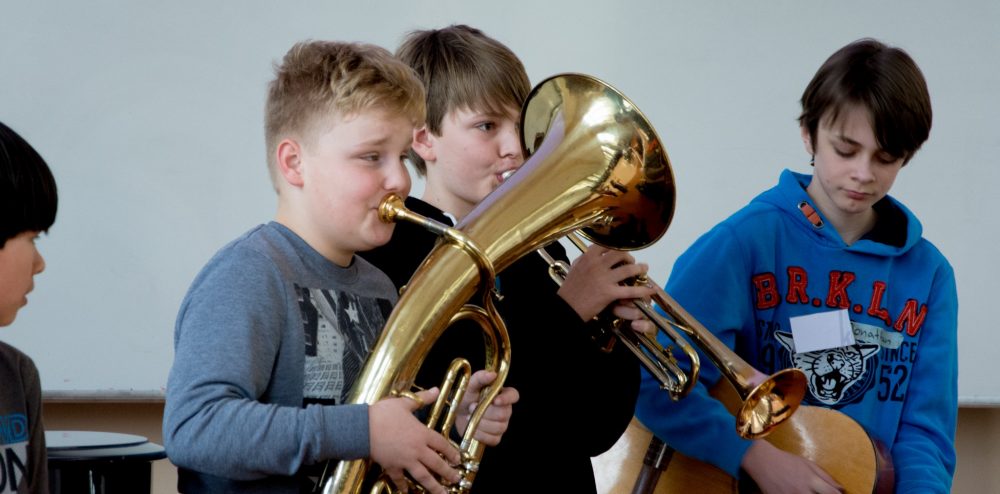New Music – contemporary music – music of the present – atonal music?
What does it all mean?
When we talk about New Music, we refer to the musical development of the so-called serious music of the 20th and 21st centuries: The transition from tonality to atonality, innovations like dodecaphony, serialism, aleatoric music, Dada, the extension of the concept of sound by including noises, overtones and potentially all sound sources of everyday life, rhythmic complexity, spectralism, archaism, the development of electronic music, as well as a new expressionism.
New, however, also means, especially in the context given here, unheard, not stereotypical, sensitive and open to connections and bridges to the real world surrounding us. Moreover, it means invention, rediscovery out of the personal situation of the inventor (here the pupil). This way, it is possible to illustrate by means of examples what has already been considered new music. What, however, is to become new music in the respective constellation, should be based primarily on openness and inventiveness.
The term Intuitive Music was coined in Europe by Karlheinz Stockhausen (1928 – 2007). It describes music that aims to make the performer’s inner experience audible. Stockhausen clearly differentiates Intuitive Music from the concept of improvisation. According to him, the improvising performer relies primarily on experience-based patterns and draws on them when making music. In the case of intuitive music, Stockhausen proposes a complete removal of categorisation in styles or forms. In contrast to John Cage it is not the chance moment that becomes the subject of musical composition. Rather, Stockhausen places the performer’s intuition together with the performance situation as well as the piece itself – the verbal prompt – into a musically meaningful reference system.
Intuitive Music demands from the performer a high level of sensitivity to their personal musical experience, a high responsiveness in interaction with other performers, as well as the capacity to interpret prompts in a differentiated manner.
The cycles of text compositions From the Seven Days (No. 26, 1968) and For Times to Come (No. 33, 1968-1970) by Karlheinz Stockhausen are examples of Intuitive Music. The text compositions consist mostly of very few, very clear verbal prompts, which form the basis of the subsequent musical interpretation.
Teaching New Music
The extension of the concept of music to include New Music offers great opportunities for music teaching, especially for playing music in class. Since the production of sounds is no longer described and evaluated with the help of the categories “right – wrong” or “nice – ugly”, but rather in conceptual pairs such as “interesting – uninteresting” or “suitable – unsuitable”, it gives all learners almost unconditional and immediate access to music. Learners can immediately start playing music together without mastering an instrument or painstakingly learning how to play a melody or rhythm. In the development of a piece according to Intuitive Music, dimensions of music come into focus which otherwise pupils can hardly experience. Did we listen to each other? Did our piece have a recognisable structure? Were we able to create dramatic tension?
On the one hand, Stockhausen’s texts offer enough prompts to develop a piece. They also include very specific playing instructions and rules which allow the group to discuss and evaluate their performance. On the other hand, the texts offer great freedom, for example, in the choice of music instruments or the number of players.
The following three module sections are designed as teaching units based on the different phases of creative processes. Together, they form a coherent trilogy, but they may also be used as self-contained units.
Module overview
|
